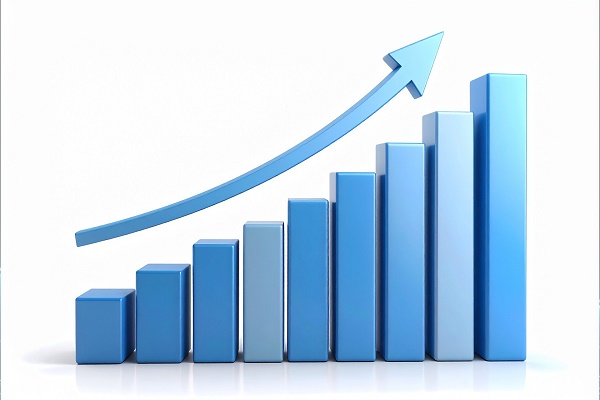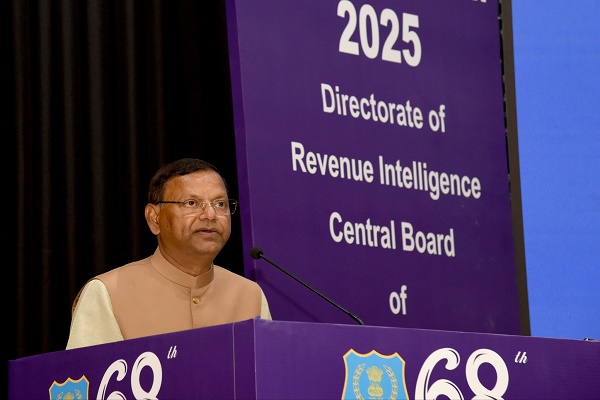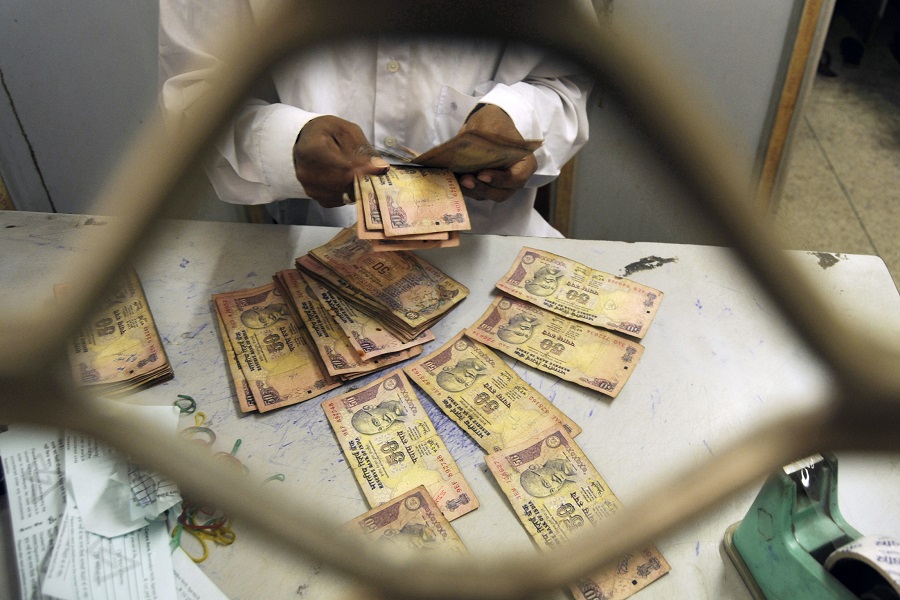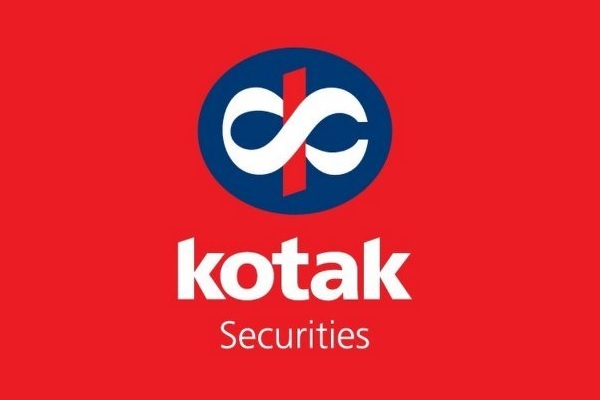Gold trading range for the day is 67390-68740 - Kedia Advisory

Gold
Daily comment as on Monday, 29 July 2024
Gold prices rose by 1.07% to settle at 68186 as markets continued to digest recent economic data for clues on the Federal Reserve’s policy trajectory. The US GDP deflator for Q2 indicated higher-than-expected levels for both headline and core measures, yet the surprises were not substantial enough to alter market bets that the Federal Reserve might deliver multiple rate cuts this year. A 25 basis point rate cut in September is fully priced in, with expectations of a total of 75 basis points in cuts by year-end. The decline in borrowing costs boosts bullion demand, as lower interest rates reduce the opportunity cost of holding non-yielding assets like gold. China's net gold imports via Hong Kong decreased by 18% in June from May, with total imports down 15.4%, reflecting reduced demand in the world's top gold consumer. In India, gold premiums surged to their highest in a decade after the government cut import duties, lowering prices to their lowest in nearly four months and sparking a surge in demand. Indian dealers charged a premium of up to $20 an ounce over official domestic prices, a significant shift from the $65 discount offered the previous week. Technically, the gold market is under short covering, with a significant drop in open interest by 45.39% to settle at 4600 while prices rose by 724 rupees. Gold finds support at 67790, with a potential test of 67390 levels if this support is breached. On the upside, resistance is likely at 68465, and a move above this level could see prices testing 68740.
Trading Ideas:
* Gold trading range for the day is 67390-68740.
* Gold edged higher as markets continued to parse the latest economic data for hints on Fed’s policy outlook.
* A 25bp rate cut in September remained fully priced in, followed by two more rate cuts this year.
* Gold premiums in India jumped to their highest level in a decade.
Silver
Silver prices edged up by 0.05% to settle at 81371, buoyed by rising optimism about potential interest rate cuts by the Federal Reserve, with the possibility of one or two more cuts by the end of the year. Market expectations of increasing silver demand from the renewable energy sector, which is anticipated to lead to a supply shortfall in the coming years, have largely been priced in, prompting some investors to unwind their long positions in silver. In the US, data revealed that the economy grew more than expected in the second quarter, driven by robust consumer spending and business investment. Despite this, bets for Federal Reserve rate cuts remained firm. The US core PCE price index, the Federal Reserve’s preferred inflation gauge, rose by 0.2% month-over-month in June 2024, surpassing market expectations of a 0.1% increase and marking an acceleration from the prior month’s 0.1% rise. Additionally, personal spending in the US increased by 0.3% in June, in line with market expectations and following an upwardly revised 0.4% rise in the previous month. The $57.6 billion increase in current-dollar PCE in June was driven by a $53.1 billion rise in spending on services and a $4.5 billion increase in spending on goods. Technically, the silver market is under short covering, with open interest decreasing by 1.4% to settle at 28786, while prices rose by 40 rupees. Silver finds support at 80960, with a potential test of 80545 levels if this support is breached. On the upside, resistance is expected at 81745, and a move above this level could see prices testing 82115.
Trading Ideas:
* Silver trading range for the day is 80545-82115.
* Silver recovered losses amid rising optimism about an interest rate cut by Fed
* Markets have priced in silver demand from renewable energy sector, leading investors to unwind long silver bets.
* A key political meeting in Beijing failed to excite investors, hoping for fresh stimulus measures.
Crudeoil
Crude oil prices declined by 1.43% to settle at 6478, primarily due to muted demand in China and the anticipation of a Gaza ceasefire deal that could reduce Middle East tensions and alleviate supply concerns. Data indicating an 11% drop in China's total fuel oil imports in the first half of 2024 has raised concerns about the broader demand outlook in China. Russian Deputy Prime Minister Alexander Novak stated that Russia would compensate for exceeding crude oil production quotas set by OPEC+ partners, emphasizing there is no friction over the issue. Russia's crude oil production in June exceeded the quotas, but the energy ministry pledged to adhere to the required output level in July. In India, crude oil imports in June fell to their lowest level since February, as monsoons curtailed mobility and major refiners prepared for maintenance work. U.S. crude oil inventories decreased by 3.741 million barrels in the week ending July 19, 2024, surpassing market expectations of a 2.05 million draw, marking the fourth consecutive week of decreases. Crude stocks at the Cushing, Oklahoma, delivery hub fell by 1.708 million barrels, following an 875 thousand draw in the previous week. Technically, the crude oil market is experiencing fresh selling pressure, with a 15.28% increase in open interest to settle at 8132 while prices declined by 94 rupees. Crude oil is finding support at 6386, with a potential test of 6294 levels if this support is breached. On the upside, resistance is likely at 6578, and a move above this level could see prices testing 6678.
Trading Ideas:
* Crudeoil trading range for the day is 6294-6678.
* Crude oil prices slipped pressured by muted demand in China and hopes of a Gaza ceasefire deal.
* China's total fuel oil imports dropped 11% in the first half of 2024, have raised concern about the wider demand outlook in China.
* US economy showed stronger-than-expected growth in Q2, suggesting potential Fed interest rate cuts in September, which could boost oil demand.
Naturalgas
Natural gas prices declined by 1.19% to settle at 173.7, driven by rising output that offset forecasts for increased demand over the next two weeks due to potential record heat in the Lower 48 U.S. states. Despite the expected rise in demand, the market has been under pressure from a substantial oversupply of gas in storage, with stockpiles approximately 16% above the average for this time of year. Data from LSEG indicates that gas output in the Lower 48 states has increased to an average of 102.4 billion cubic feet per day (bcfd) in July, up from 100.2 bcfd in June and a 17-month low of 99.4 bcfd in May. U.S. utilities added 22 billion cubic feet (Bcf) of gas into storage during the week ending July 19, 2024, surpassing market expectations of a 15 Bcf increase. This increase brings the total stockpiles to 3,231 Bcf, which is 249 Bcf higher than the same time last year and 456 Bcf above the five-year average of 2,775 Bcf. With total working gas now above the five-year historical range, the market remains well-supplied. Technically, the natural gas market is experiencing fresh selling pressure, with open interest increasing by 14.14% to settle at 45042 while prices fell by 2.1 rupees. Natural gas is finding support at 172.1, with a potential test of 170.5 levels if this support is breached. On the upside, resistance is expected at 175.8, and a move above this level could see prices testing 177.9.
Trading Ideas:
* Naturalgas trading range for the day is 170.5-177.9.
* Natural gas dropped as rising output offset forecasts for more demand over the next two weeks
* Gas stockpiles were currently about 16% above normal for this time of year
* U.S. output hit a monthly record high of 105.5 bcfd in December 2023.
Copper
Copper prices edged up by 0.08% to settle at 796.65, buoyed by a decrease in inventories monitored by the Shanghai Futures Exchange (ShFe), which fell to a two-month low of 301,203 tons. Despite weaker-than-expected economic growth in China and disappointing outcomes from a key leadership meeting indicating policy continuity rather than transformative changes, copper prices saw a modest uptick. Citi Research projects that copper prices will struggle for direction in the near term but expect a recovery to $9,500 per ton within three months and a rise to $11,000 by early 2025. This forecast revision reflects anticipated improvements in global manufacturing sentiment, supported by expected Federal Reserve rate cuts and potential inventory draws in the latter half of 2024. The copper premium in China, which surged to $25 per ton—the highest in over three months—also reflects increased demand relative to LME prices. The global refined copper market showed a significant surplus of 65,000 metric tons in May, up from 11,000 metric tons in April. Year-to-date, the market has seen a surplus of 416,000 metric tons, up from 154,000 metric tons a year earlier. May’s refined copper output was 2.37 million metric tons, while consumption was 2.31 million metric tons. Technically, the copper market is experiencing fresh buying, with open interest rising by 2.12% to 13,490. Prices have increased by 0.65 rupees, with support at 793.4 and potential for a test of 790.2 if this support is breached. Resistance is anticipated at 801.2, with a move above this level potentially pushing prices to test 805.8.
Trading Ideas:
* Copper trading range for the day is 790.2-805.8.
* Copper gains as SHFE inventories declined to a two-month low of 301,203 tons.
* Citi expects copper to recover to $9,500/t within three months
* China reported weaker than expected economic growth
Zinc
Zinc prices edged down by 0.06% to settle at 252.2 amid mixed supply and demand dynamics. In June, China's refined zinc production increased by 1.81% month-over-month to 545,800 metric tons but fell by 1.2% year-over-year. For the first half of the year, output totaled 3.182 million metric tons, down 1.39% from the previous year but higher than anticipated. The rise in production in Guangxi, Gansu, and Guizhou, alongside resumed operations at various smelters, offset reductions elsewhere due to maintenance shutdowns. Despite the increased production, the zinc supply remains constrained, with tight raw material availability and continued low refinery inventories. Zinc ingot inventories across seven regions declined to 169,100 metric tons, down by 22,800 metric tons from mid-July and 8,600 metric tons from late July. In particular, stocks at Shanghai Futures Exchange warehouses fell by 5.1% from the previous Friday. The global zinc market experienced a reduced surplus of 22,100 metric tons in April compared to 70,100 tons in March. For the first four months of the year, the surplus was 182,000 tons, down from 282,000 tons in the same period last year. Additionally, disruptions in Australia, with MMG Ltd halting operations at its Dugald River zinc mine for repairs, are expected to exacerbate the supply tightness, although MMG anticipates minimal impact on overall 2024 production. Technically, the market is witnessing long liquidation, as indicated by a 2.33% drop in open interest, settling at 1,845 contracts. Prices are down by 0.15 rupees, with support at 250.8 and a potential test of 249.3 if this support fails. Resistance is anticipated at 253.6, with a move above this level possibly pushing prices to test 254.9.
Trading Ideas:
* Zinc trading range for the day is 249.3-254.9.
* Zinc settled flat as in June, China's refined zinc production was up by 1.81% MoM
* The supply of zinc concentrate remains tight, and refinery raw material inventories continue to be consumed more than replenished
* In June, China's refined zinc production was 545,800 mt, up 9,700 mt or 1.81% MoM but down 1.2% YoY.
Aluminium
Aluminium prices rose by 0.52% to settle at 212.5, buoyed by tightening inventories and supportive macroeconomic factors. The total social inventory of aluminum ingots fell to 790,000 metric tons, a reduction of 7,000 metric tons week-over-week and 2,000 metric tons since July 22. Despite this drop, inventories are still 254,000 metric tons higher year-over-year. Inventories at Shanghai Futures Exchange warehouses also decreased by 0.6% from the previous week. Global primary aluminium output grew by 3.2% year-on-year to 5.94 million tonnes in June, according to the International Aluminium Institute (IAI). For the first half of 2024, output increased by 3.9% year-on-year to 35.84 million metric tons, driven predominantly by higher production in China. China's output for the first half reached 21.55 million tons, a 7% increase from the previous year, with June's production being the highest in nearly a decade. The premium for aluminium shipments to Japanese buyers for July to September surged to $172 per metric ton, a 16%-19% increase from the prior quarter, indicating tighter supply conditions in Asia. Additionally, aluminium stocks at three major Japanese ports rose by about 3% to 317,860 metric tons by the end of June. Technically, the market is experiencing fresh buying activity, as evidenced by a 2.52% increase in open interest, settling at 4,914 contracts. Prices have risen by 1.1 rupees, with support at 211.5. Should this level be breached, a further decline to 210.3 is possible. Conversely, resistance is seen at 213.7, with a break above this level potentially driving prices up to 214.7.
Trading Ideas:
* Aluminium trading range for the day is 210.3-214.7.
* Aluminium gains as the total social inventory of aluminum ingots was, down 7,000 mt WoW
* China lowered deposit rates, and Canada's rate cut was in line with expectations, leading to increasing global market liquidity
* Shanghai warehouse aluminium stocks down 0.6%
Cottoncandy
Cottoncandy prices increased by 0.32% to settle at 56,730, supported by reduced cotton acreage in key Indian states and delayed shipments from major producers like the US and Brazil. The decline in cotton planting areas in Punjab, Haryana, and Rajasthan this year—10.23 lakh hectares compared to last year's 16 lakh hectares—has tightened supply. Specifically, Punjab's cotton area dropped to 97,000 hectares from a historical norm of 7.58 lakh hectares, Rajasthan's area fell to 4.75 lakh hectares from 8.35 lakh hectares, and Haryana's cotton acreage decreased to 4.50 lakh hectares from 5.75 lakh hectares. The reduction in cotton acreage in these regions, coupled with a firm trend in cottonseed prices, has bolstered cotton prices. Additionally, the onset of monsoon rains in Karnataka, Telangana, and Andhra Pradesh, where sowing for the kharif 2024 season has begun, is expected to boost cotton planting, especially in Telangana as farmers shift from less profitable crops like chillies. The US 2024/25 cotton projections indicate increased beginning and ending stocks, with the season-average upland farm price reduced to 70 cents per pound. Higher world ending stocks, now projected at 83.5 million bales, are due to increased production in Burma and higher consumption in Vietnam and Burma. In Rajkot, a major spot market, prices ended at 27,312.1 rupees, reflecting a 0.09% gain. Technically, the market is undergoing short covering, with open interest unchanged at 166. Prices have risen by 180 rupees, with support at 56,620 and a potential test of 56,500. Resistance is anticipated at 56,840, with a move above possibly testing 56,940.
Trading Ideas:
* Cottoncandy trading range for the day is 56500-56940.
* Cotton prices gained as area under cotton in North India drops
* China's agriculture ministry raised its forecast for cotton imports in the 2023/24 crop year by 200,000 metric tons
* The 2024/25 U.S. cotton projections show higher beginning and ending stocks compared to last month.
* In the global 2024/25 cotton balance sheet, beginning stocks, production and consumption are increased.
Turmeric
Turmeric prices settled down by 0.18% at 15,720, influenced by reports of increased sowing across major producing states. Despite this increase, the downside for turmeric prices is limited as farmers are withholding stocks, anticipating further price rises. Sowing in the Erode region has doubled compared to last year, while Maharashtra, Telangana, and Andhra Pradesh have seen 30-35% higher sowing estimates. The total area under turmeric cultivation is projected to rise from 3-3.25 lakh hectares last year to 3.75-4 lakh hectares this year. Production estimates for 2024 suggest 45-50 lakh bags, with an outstanding stock of 35-38 lakh bags from the previous year. Despite the higher sowing, the anticipated production of turmeric for the upcoming season is projected at around 70-75 lakh bags, with no outstanding stock remaining. This supply-demand imbalance indicates that turmeric availability will be less than consumption in 2025. In 2023, production was 80-85 lakh bags with an outstanding stock of 25-30 lakh bags. Exports of turmeric during April-May 2024 fell by 20.03% to 31,523.94 tonnes compared to the same period in 2023. However, imports surged by 417.74% to 14,637.55 tonnes, compared to 1,387.29 tonnes the previous year. Prices in Nizamabad, a key spot market, increased slightly by 0.13% to 16,384.6 rupees. Technically, the market is experiencing long liquidation, with a 0.92% drop in open interest to 15,742 and a price decrease of 28 rupees. Turmeric is receiving support at 15,610, with potential for a test of 15,498 if this level is breached. Resistance is likely at 15,864, with a move above potentially pushing prices to 16,006.
Trading Ideas:
* Turmeric trading range for the day is 15498-16006.
* Turmeric prices settled down amid news of increased sowing.
* Turmeric sowing on the Erode line is reported to be double as compared to last year.
* Turmeric was sown in about 3/3.25 lakh hectares in the country last year, which is estimated to increase to 3.75/4 lakh hectares this year.
* In Nizamabad, a major spot market, the price ended at 16384.6 Rupees gained by 0.13 percent.
Jeera
Jeera prices settled down by 0.9% at 26,485 due to expectations of higher production, which are likely to pressure prices. Despite this, the downside is moderated by strong domestic and export demand, coupled with tight global supplies. Farmers are holding back stocks, anticipating better prices, which is supporting the current price levels. This season, jeera production is expected to rise by 30% to 8.5-9 lakh tonnes, driven by a significant increase in cultivation area. Gujarat has seen a 104% increase in sowing, while Rajasthan's area increased by 16%. This expanded sowing is a response to last season’s high prices and is expected to result in record production, particularly in Gujarat, where production is estimated at 4.08 lakh tonnes—significantly higher than the previous record of 3.99 lakh tonnes in 2020-21. Rajasthan also saw a 53% increase in production. Globally, cumin production has surged, particularly in China, Syria, Turkey, and Afghanistan. China’s output has risen to 55-60 thousand tons from 28-30 thousand tons, while Turkey anticipates 12-15 thousand tons and Afghanistan’s output may double. The global increase in supply is expected to drive down prices. Export data shows a 43.50% increase in jeera exports during April-May 2024 compared to the same period in 2023, reaching 58,943.84 tonnes. However, exports in May 2024 dropped 44.99% from April 2024 and 15.64% from May 2023. Technically, the market is under fresh selling pressure with a 2.34% increase in open interest to 26,700 and a price drop of 240 rupees. Jeera is currently supported at 26,260, with a potential test of 26,020 if this support level is breached. Resistance is at 26,850, with a move above potentially pushing prices to 27,200.
Trading Ideas:
* Jeera trading range for the day is 26020-27200.
* Jeera settled down as the expectation of higher production could weigh on the prices.
* China's cumin output soared to over 55-60 thousand tons from the previous 28-30 thousand tons.
* Turkey anticipates producing 12-15 thousand tons, while Afghanistan's output could double.
* In Unjha, a major spot market, the price ended at 26693.65 Rupees dropped by -0.8 percent.
Views express by all participants are for information & academic purpose only. Kindly read disclaimer before referring below views.










More News

Buy Silver May @ 100000 SL 99400 TGT 100800-101400. MCX - Kedia Advisory











